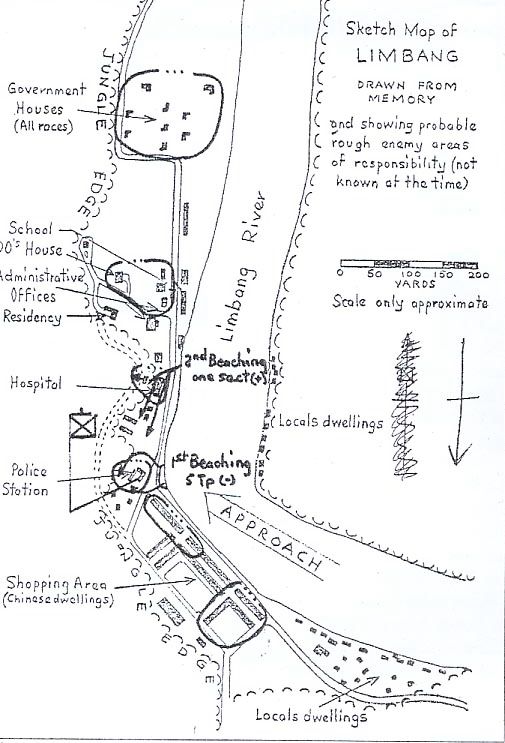- Author
- Francis, Richard
- Subjects
- History - general
- Tags
-
- RAN Ships
- None noted.
- Publication
- March 2003 edition of the Naval Historical Review (all rights reserved)

Several Marines were killed before even gaining the shore. Casualties began to mount as the second craft stood off giving covering fire. With the coxswain of the first craft wounded, the vessel drifted off the river bank but her CO, Leut Willis was able to beach her again halfway between the Residency and the hospital (see map). Captain Moore RM ordered his reserve troop ashore, where they met up with the advance party who had made good progress clearing all before them, meeting only sporadic fire from the enemy. The hospital was reached without incident. However, without warning a more determined enemy group opened fire, killing the troop Sergeant and two Marines. Amidst this gun battle, some incongruous singing of ‘Coming round the Mountain’ was heard from the hospital. By calling out in English the sergeant was able to identify the Resident and his wife, with several other hostages, unharmed but fairly shocked. Their guards had fled.
With his main objective of rescuing the hostages achieved, Captain Moore was reassured by the Resident that none were held elsewhere. Meanwhile the second assault craft had been manouevering in the fast flowing river to best provide supporting fire where possible. At this stage their reserve troop also came ashore, and the craft once more shoved off to position itself in mid-river. Gradually the enemy were routed, the police station cleared, and the troops moved north into the native town. Apart from a short engagement by rebels from a room full of women and children which was dealt with without further casualties, the township was cleared systematically and most of the enemy resistance crumbled accordingly. Never-theless, a number of rebels continued to hold out in the nearby jungle, with frequent movement and sniping for the next 24 hours.
After the second assault craft had beached a dressing station was set up by the hospital to treat the casualties. Interrogation of prisoners was commenced and further hostages were discovered in the town jail. Eventually a total of 14 hostages had been released unharmed. Later that day both Z craft returned to Brunei with the released hostages and casualties onboard.
LIMA Company consolidated their position the next day, having taken about 50 prisoners and having found 15 dead bodies of the rebels. Apparently about 350 rebels had held the town and many later died of their wounds in the jungle. The Marines had suffered five dead and six wounded, including one sailor onboard the assault craft. It is worth quoting Captain Jeremy Moore’s observations, made much later:
It is perhaps interesting to note that, though my assessment of where the enemy headquarters might be was right, I was quite wrong about the hostages. Furthermore, it was chance that the second beaching happened where it did, that resulted in us taking the hospital from the direction we did. It could be that this saved us heavier casualties, though I assess the most important factor in the success of the operation was first class leadership by junior NCOs. Their section battle craft was a joy to watch and the credit for this belongs to the troop and Section commanders.’

With further actions by other British units (Queen’s Own Highlanders at Seria and Gurkhas at Tutong) the rebellion was effectively crushed within five days. Thus began the four year long period of Confrontation along the territories bordering Indonesia, to which the greater part of the Far East Fleet in Singapore was committed, to constant patrolling the sea approaches and riverine systems, interception of guerrilla units, intelligence gathering and (infrequently) pre-emptive strikes. A wholehearted ‘Hearts and Minds’ campaign was also conducted with the indigenous population, similar to that successfully waged during the previous Malayan Emergency, which had ended in 1960. Sarawak and British North Borneo were joined shortly afterwards to become East Malaysia, but had to remain on the defensive until the fall of Sukarno in 1966.
Following the successful action at Limbang, Captain JJ Moore RM was awarded a Bar to his MC, two RM corporals a Military Medal each, while the leading landing craft CO, Leut D Willis RN, gained a DSC and his coxswain a DSM.
Bibliography:
- RM Globe and Laurel (Dec 2002)
- RN Navy News (Dec 2002)
- Royal Navy Day by Day (1974)
- Author’s personal recollections




